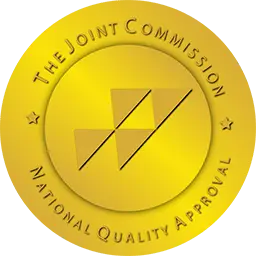The teenage years can be a tumultuous time, marked by a range of pressures, expectations, and emotional highs and lows. While many teens navigate this period without significant issues, some may struggle with severe emotional distress that leads to self-harming behaviors. If you find yourself asking, “Is my teen cutting?” or searching for signs of self-harm in teens, it’s crucial to understand the warning signs and how you can help.
Warning Signs of Self-Harm in Teens
Self-harm, such as cutting, can be a form of coping mechanism for teens dealing with overwhelming emotions. Recognizing the signs of self-harm in teens can be challenging, as these behaviors are often hidden. However, several warning signs could indicate your teen is self-harming:
Physical Signs
- Unexplained cuts, bruises, or burns: These may appear frequently and might be found on the arms, thighs, or other concealed areas.
- Scars in a pattern: Intentional marks may form patterns; examining repetitive wounds can indicate self-injury.
- Constantly wearing long sleeves or pants: Even in hot weather, your teen might dress in a way that covers their skin.
Emotional and Behavioral Signs
- Withdrawal from friends and activities: A sudden loss of interest in social engagements can be a red flag.
- Mood swings: Noticeable shifts from high energy to deep sadness or irritability.
- Frequent expressions of hopelessness or worthlessness: Vocalizing feelings of being trapped or unable to handle stress.
Behavioral Changes
- Increased time spent alone: Isolation can be a way to engage in self-harm without drawing attention.
- Stockpiling self-harm tools: Finding sharp objects or lighters among their possessions.
- Excuses for injuries: Repeated claims of accidents, like falling or being clumsy, that don’t add up.
Understanding the Motivations Behind Self-Harm
It’s essential to recognize that self-harm is not a bid for attention or a suicidal gesture, but a coping mechanism that teens use to manage or express unbearable feelings. According to the Mayo Clinic, self-harm can act as a way to:
- Manage overwhelming emotions: Physical pain can temporarily alleviate emotional pain.
- Feel a sense of control during chaos: Engaging in self-harming behaviors can be a way to exert control over one’s body when everything else feels out of control.
- Process trauma: Reliving traumatic experiences without adequate support might drive a teen towards self-injury as a coping strategy.
How to Approach the Situation if You Suspect Self-Harm
Tackling the question, “Is my teen cutting?” or understanding the signs your teen is self-harming starts with an open and supportive approach. Here are some steps to consider:
Initiate a Conversation
- Private and calm setting: Find a safe, quiet, and secluded spot to talk without distractions.
- Use non-judgmental language: Express concern without accusations. For instance, say “I’ve noticed you’re wearing long sleeves even when it’s hot, and I want to make sure you’re okay,” instead of “Why are you hiding something?”
- Listen more than you speak: Allow your teen to share their experiences and feelings without immediate lectures or solutions.
Providing Support
- Seek professional help: A licensed therapist or counselor trained in adolescent issues can be crucial in providing your teen with adequate support they need.
- Encourage healthy outlets: Suggesting and participating in activities like sports, arts, or music can help you express emotions in a non-destructive way.
- Establish trust and open communication: Continue to reinforce that you are there for them without judgment.
How to Prevent Self-Harm
Preventive measures are about fostering a supportive and open environment where your teen feels heard and valued.
- Promote open discussions about feelings and mental health: Regularly discuss your teen’s mental and emotional well-being with them.
- Watch for and limit stressors: Be aware of the academic, social, and personal pressures your teen might be facing.
- Model and teach healthy coping mechanisms by encouraging methods such as mindfulness, journaling, or talking to a trusted person when you feel overwhelmed.
According to HealthyChildren.org, approximately 17% of adolescents engage in self-harm at some point. Understanding this statistic underscores the importance of awareness and intervention in treating self-harm behaviors.
How Crown Adolescent Can Help
At Crown Adolescent, we understand the importance of addressing the root causes of self-harm and equipping teens with healthier coping mechanisms. Our adolescent mental health treatment programs in Massachusetts are designed to provide comprehensive support and treatment for teens struggling with self-harm and other mental health issues.
Our experienced team of professionals offers a holistic approach that includes individual therapy, group sessions, and family counseling. We focus on building resilience, enhancing communication skills, and promoting long-term healing and well-being.
Call Crown Adolescent Health Today
If you’re concerned about the signs of self-harm in teens or wondering, “Is my teen cutting?” it’s crucial to seek help as early as possible. Crown Adolescents’ mental health treatment programs in Massachusetts offer the support and resources your teen needs to navigate this challenging time. To learn more about how we can help your teen lead a healthier, happier life, contact us today.
Understanding and addressing teen self-harm is a critical step in fostering a supportive and safe environment for our youth. Together, we can empower them to find healthier ways to cope and thrive.



